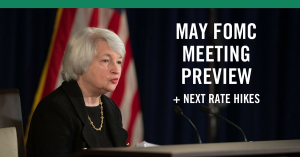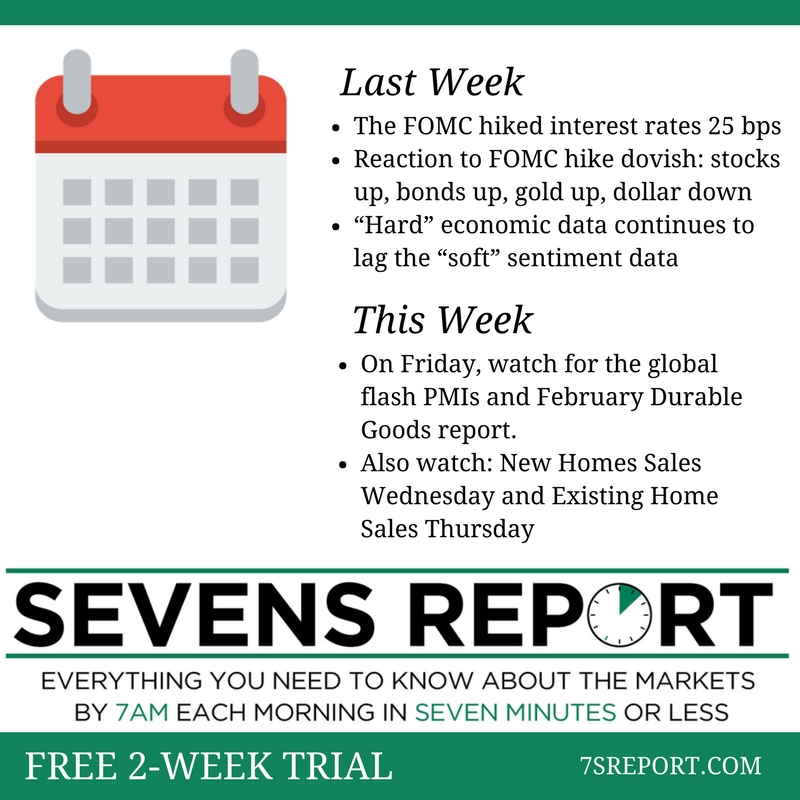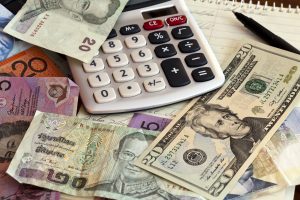This Week’s Fed Decision Takeaway and Rate Hikes To Come, May 4, 2017
The Sevens Report is everything you need to know about the markets, in 7 minutes or less. Sign up for a free 2-week trial today and get smarter about the market.
The Fed made no changes to interest rates this week, as expected.
Fed Decision Takeaway
The Fed statement almost perfectly met our “Meets Expectations If” scenario, as the Fed acknowledged the slight loss of economic momentum since March, but stated it viewed the slowing as only temporary, and left the door firmly open for a rate hike in June.
Looking specifically at the statement, the Fed said yesterday that economic activity had “slowed” compared to “expanded at a moderate pace” in March. But, in the second paragraph, the Fed said the loss of economic momentum appears to be “transitory,” and signaled the recent underwhelming data won’t make the Fed deviate from future rate hikes.
Underscoring that point was the fact that the Fed said risks to the near-term economic outlook continue to be “roughly balanced,” which is Fed speak for “we can hike rates at any meeting going forward.” Bottom line, the Fed was not spooked by the recent soft data and it is not deterring them from any future rate hikes… yet.
From a market standpoint, there was a mild “hawkish” reaction, not so much because the statement was hawkish, but instead because there was nothing dovish in the statement. That’s what markets have become conditioned to expect. The Dollar Index drifted to the highs of the day 30 minutes after the statement while the 30-year Treasury erased small gains and closed fractionally lower. Stocks drifted slightly lower, but selling was mild. Overall, the Fed statement was not a market mover.
The Sevens Report is the daily market cheat sheet our subscribers use to keep up on markets, seize opportunities, avoid risks and get more assets. Try it free for two weeks.


